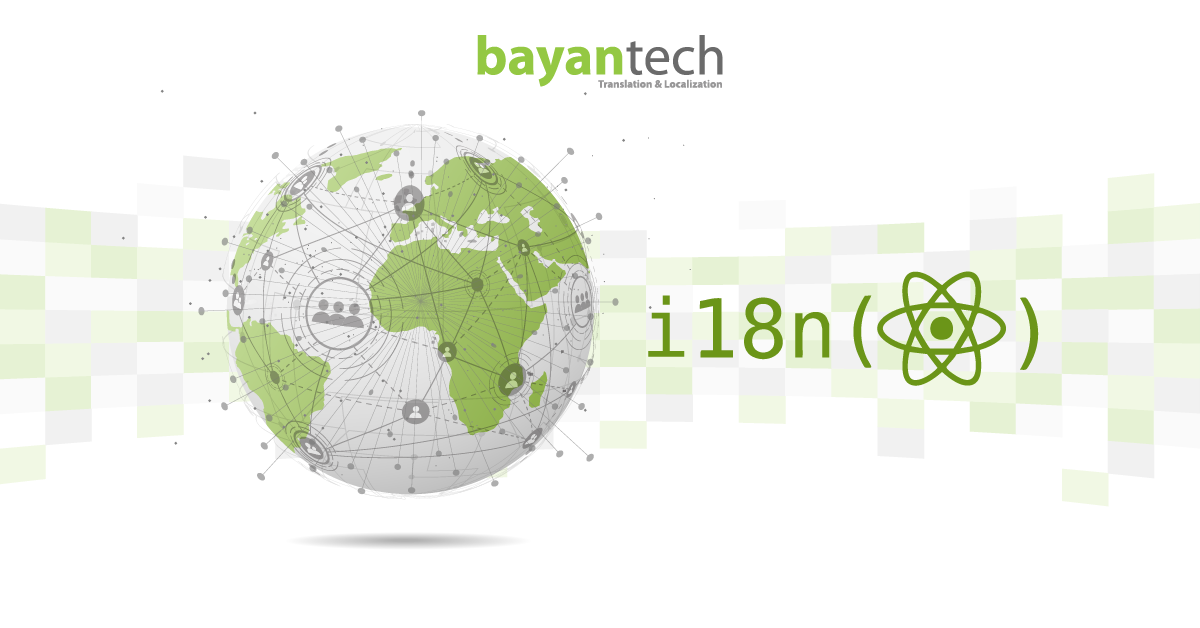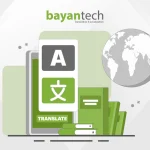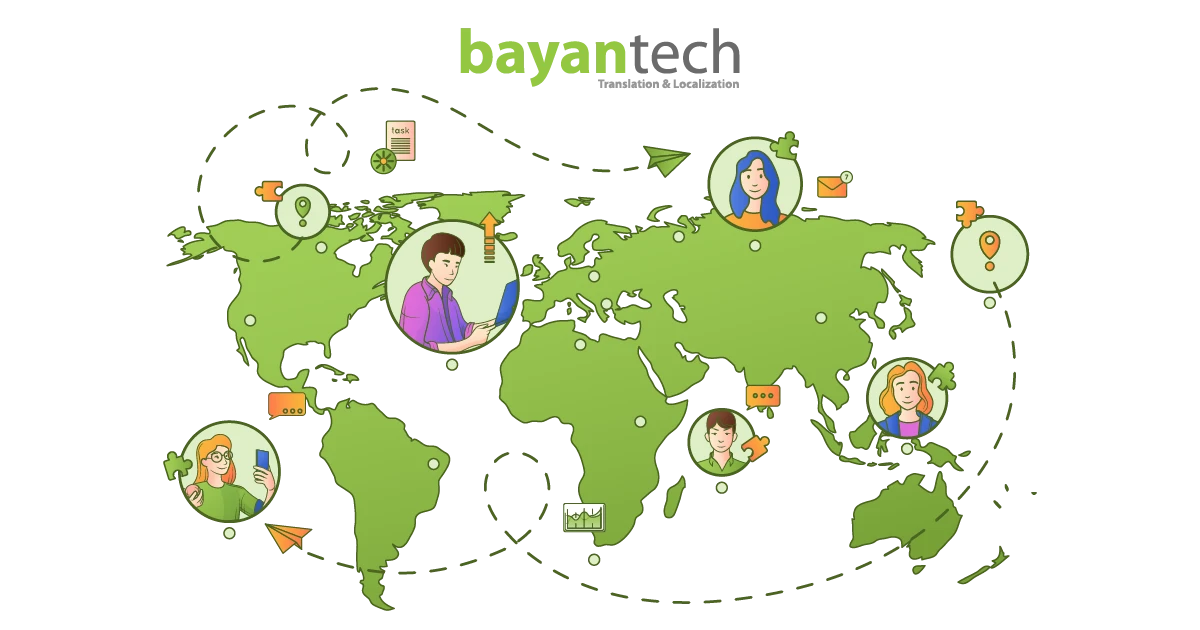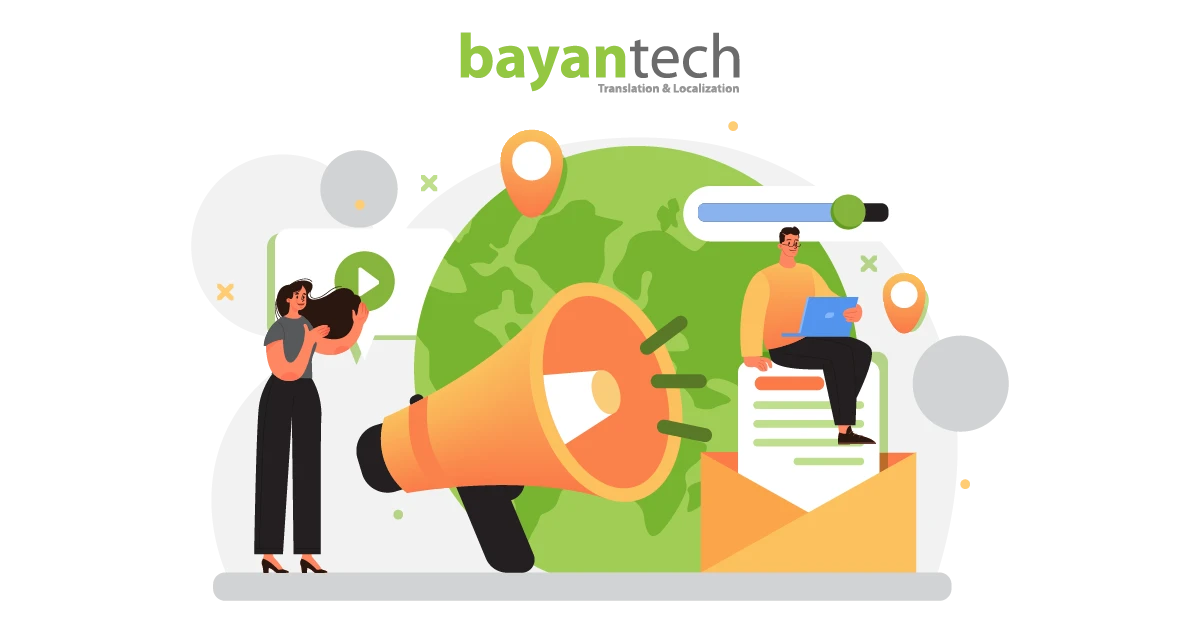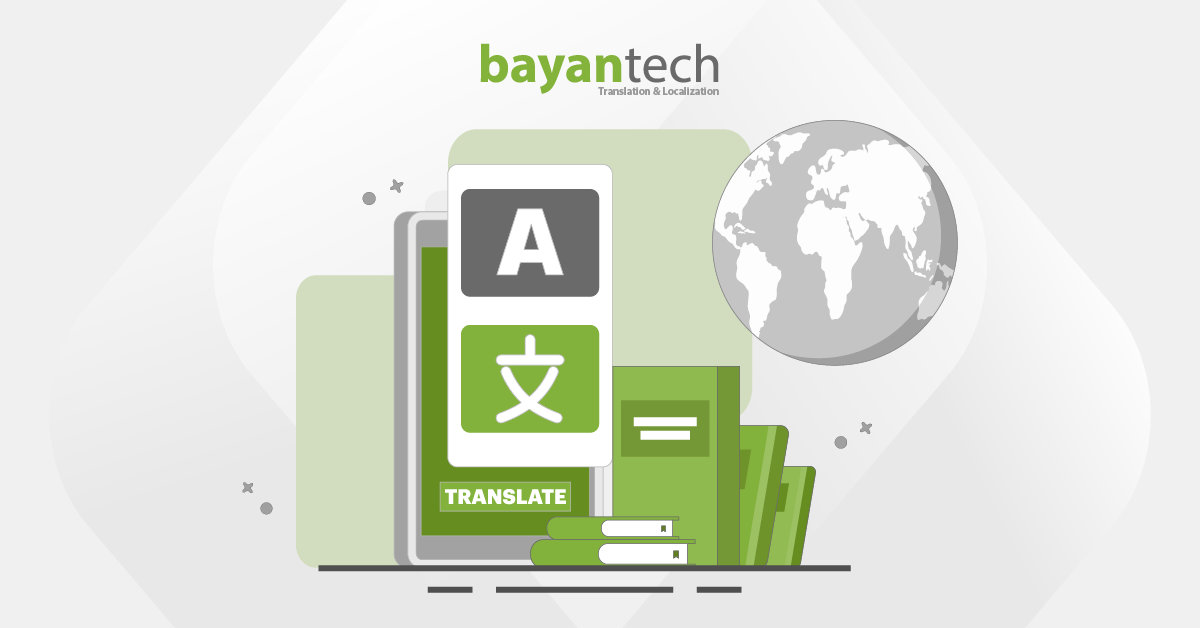Picture this: you’ve built an amazing app that’s sleek and fast, and your local users love it. Then, you decide to launch in a new market, and suddenly, text gets cut off, dates make no sense, and your “seamless” experience feels anything but.
That’s where i18n (internationalization) comes in.
Think of it as laying the groundwork so your software can “speak” to users anywhere in the world, without rebuilding it from scratch every time you enter a new market.
In this guide, we’ll unpack what i18n means, why it’s more than just translating words, and how it saves you time and money when going global.
i18n Definition and Its Role in Global Software Success
Internationalization, or i18n (short for “i” + 18 letters + “n”), is the process of designing and developing software so it can easily be adapted to different languages and regions without major code changes.
In today’s global market, where digital products often launch across multiple countries simultaneously, internationalization has become a fundamental step in software development.
Closely related terms include l10n (localization), which refers to tailoring the content for a specific region or language, and g11n (globalization), the broader strategy of making your software globally accessible and culturally relevant.
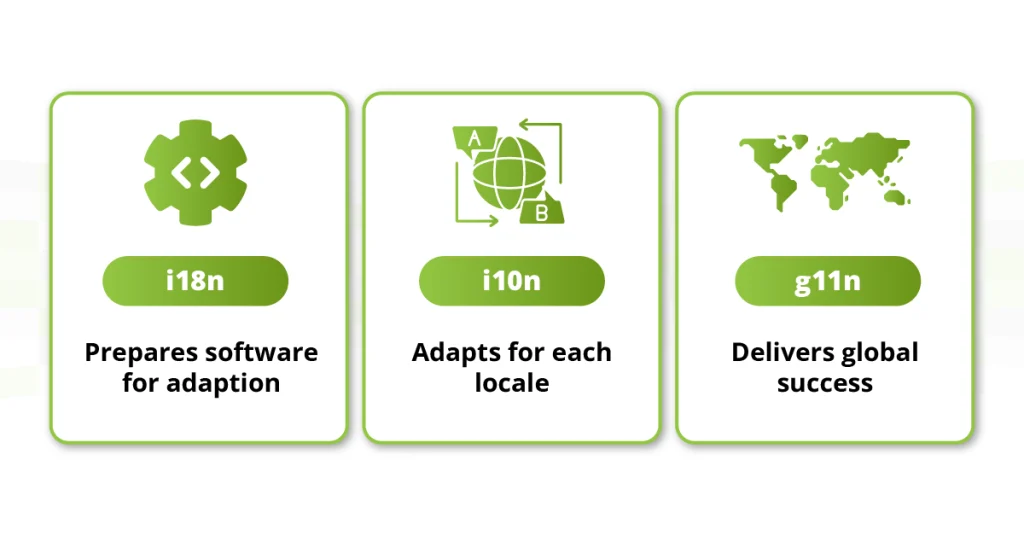
By investing in i18n from the start, businesses can speed up localization efforts, reduce costs, and make their applications scalable for diverse target markets.
Simply put, understanding i18n is the first step to making your software speak the language of your users wherever they are.
Internationalization (i18n) Explained Simply
While localization (l10n) is about adapting your product to a specific locale, i18n focuses on building your software to handle those changes seamlessly.
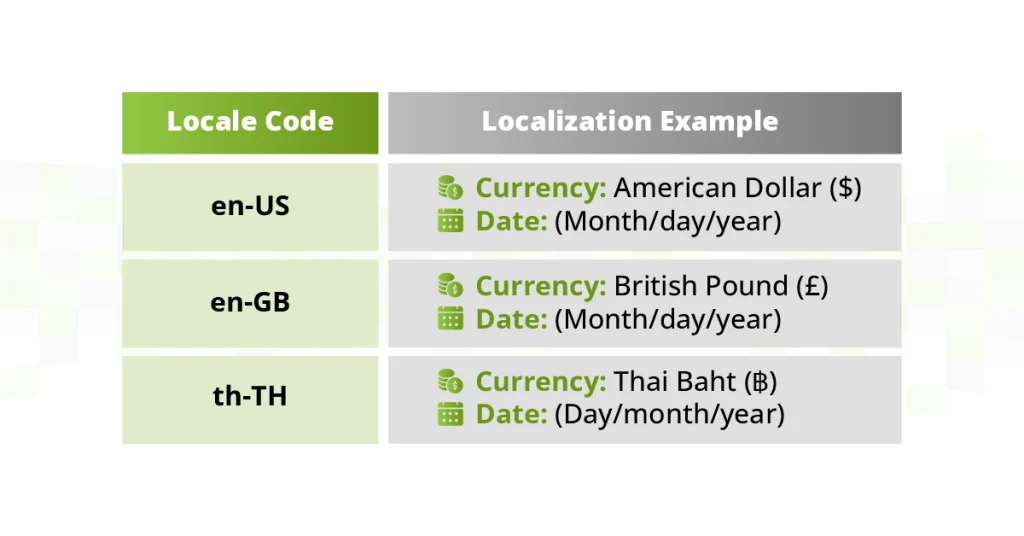
In other words, localization translates your product for a new market, but internationalization makes it possible to localize efficiently in the first place.
Key aspects of i18n include:
- Language neutrality: Structuring code to support multiple languages without hard-coded text.
- Character encoding support: Ensuring proper handling of scripts like Latin, Cyrillic, Arabic, or Chinese.
- Regional settings: Allowing flexible formats for dates, numbers, currencies, and time zones.
- UI adaptability: Designing layouts that work for different text lengths and reading directions (e.g., right-to-left scripts for languages like Arabic and Urdu).
The Business and Technical Benefits of Internationalization
Internationalization (i18n) is more than just a technical best practice; it’s a strategic enabler for software products aiming to thrive in a global market.
By integrating i18n during development, you create a product that can scale across borders without repetitive code edits or costly re-engineering for each new locale.
Here’s why i18n matters for modern software development:
- Faster global expansion: Break into new markets quickly without overhauling your entire setup.
Take the famous YouTuber MrBeast, for example; by dubbing his videos in 11 languages other than English, he racked up 160 million views in just the first half of 2022.
- Lower engineering costs: Avoid duplicated efforts by building once and adapting everywhere.
- Better user experience: Deliver region-specific formats for time zones, currencies, and date layouts, making your app feel native to every audience.
- Increased market share: Studies show that around 90% of Internet users prefer browsing in their native tongue, and many won’t engage at all if that option isn’t available.
Adapting to different languages, writing systems, and cultural expectations can make all the difference.
- Regulatory compliance: Meet local standards and legal requirements effortlessly through built-in flexibility.
With strong i18n practices, your app can serve users in Tokyo and Toronto, with just one codebase, ensuring seamless functionality and familiarity worldwide. In today’s interconnected digital economy, internationalization is a core part of every successful global software strategy.
What Goes Into Building Internationalized Software?
Internationalization (i18n) is not just a development add-on; it’s a design principle that ensures your software can adapt to any language or locale without major rewrites. To achieve this, developers need to plan for flexibility from the earliest stages of coding and UI design.
Key elements of the process of designing internationalized software include:
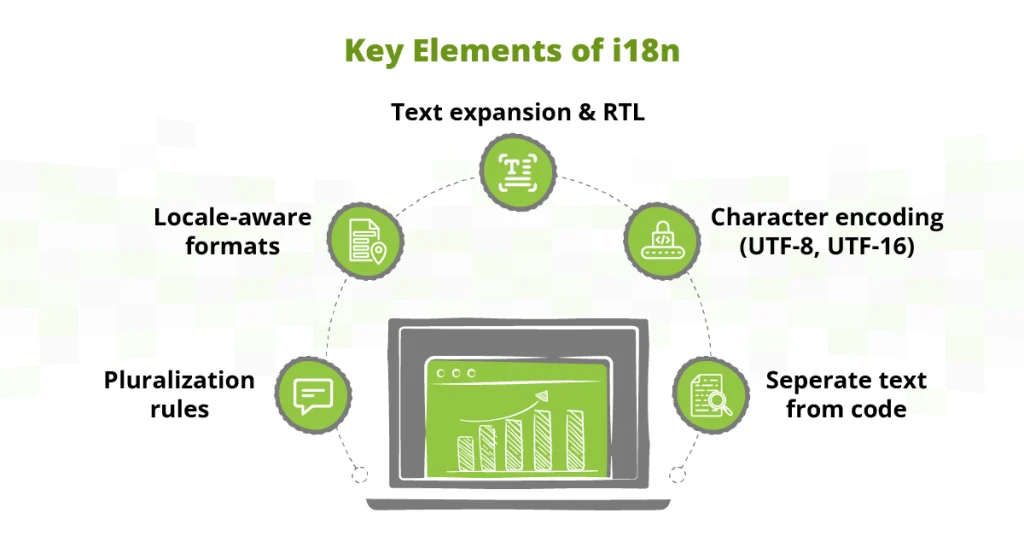
- Separating text from the source code: Use resource files or string bundles instead of hardcoding text directly into your application. This makes translations easier and avoids repetitive code edits.
- Preparing for text expansion and right-to-left scripts: Some languages, like German or Arabic, take up more space or use different reading directions. Designing flexible layouts prevents broken interfaces.
- Supporting multiple character encodings: UTF-8 and UTF-16 ensure that your app correctly handles diverse scripts, from English and Chinese to Hindi and Russian.
- Designing a language-agnostic user interface: Keep button sizes, form fields, and navigation adaptable to different word lengths and orientations.
- Avoiding hardcoded formats: Date, time, currency, number systems, and even color choices should be locale-aware to meet cultural expectations.
- Implementing pluralization and grammar rules: Dynamic content should follow the rules of each language, ensuring accuracy and a natural user experience.
Good i18n doesn’t just mean translating text; it means building for cultural flexibility from day one, making your software ready to delight users worldwide.
i18n as the Foundation of Your Localization Workflow
Internationalization (i18n) is the blueprint that makes effective software localization (l10n) possible. Without it, adapting your product for different markets often means costly redevelopment, longer timelines, and repeated engineering fixes.
By implementing i18n from the start, you set the stage for a smoother localization process:
- Faster localization cycles: With text strings separated, flexible UI layouts, and locale-aware features in place, localization teams can focus on translation and cultural adaptation, not fixing code issues.
- Reduced redevelopment needs: i18n prepares the product so that adding a new language doesn’t require rewriting or restructuring your application.
- Stronger globalization (g11n) strategy: i18n is a core pillar of globalization, allowing your product to scale efficiently across multiple markets with minimal rework.
- Improved QA and testing: A well-internationalized product can be tested in multiple languages and regions without running into formatting errors, broken UI, or text overflow problems.
Think of internationalization and localization as two sides of the same coin: i18n lays the blueprint, while l10n customizes the build. It’s hard to do one well without the other.
Investing in solid internationalization upfront leads to faster market launches, lower costs, and a better user experience worldwide.
Real-World Examples of i18n in Action
Internationalization (i18n) is behind some of the world’s most popular apps, enabling them to adapt seamlessly to different regions, languages, and user expectations. Here’s how leading platforms put i18n into practice:
- Facebook: Offers instant switching between dozens of languages without requiring separate app versions. The UI automatically adjusts text direction, spacing, and even certain features based on the selected locale.
- Google: Delivers region-aware search results and interfaces. Whether you’re in Paris or São Paulo, Google tailors your experience: date formats, currency symbols, and even autocomplete suggestions adapt to your location.
- Netflix: Supports a fully multilingual UI, dynamic subtitle options, and even localized artwork for shows and movies, making the platform feel native to each market.
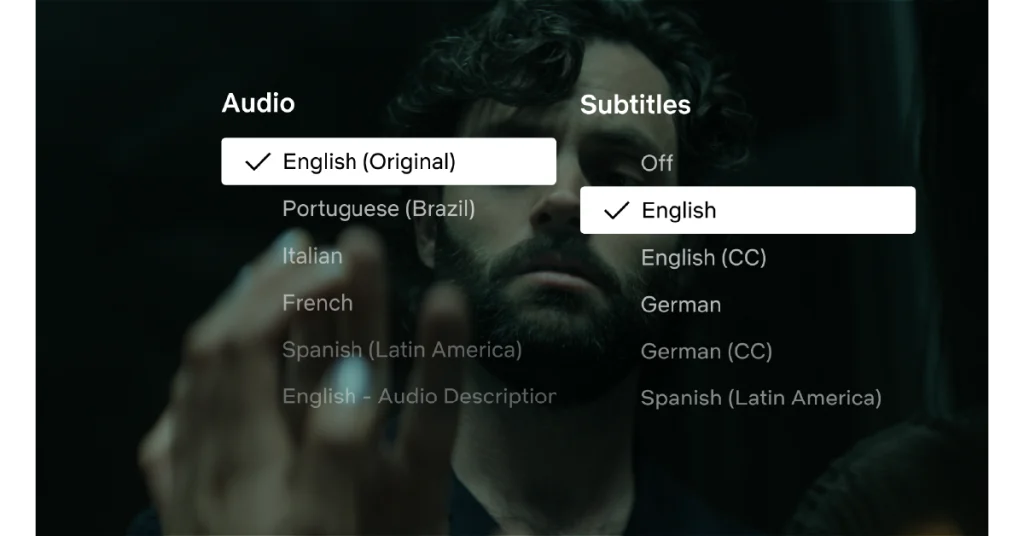
Without strong i18n foundations, simply translating text often leads to broken layouts, truncated buttons, mismatched time zones, and even data processing bugs.
Ever noticed how your favorite apps change automatically based on your specific locale, time zone, or market preferences? That’s the power of internationalized software at work, delivering a smooth, tailored experience for users worldwide.
Tips for Adding i18n to Your Product Roadmap
Implementing internationalization (i18n) successfully requires planning and strategy from the very start of software development. By making i18n a core part of your roadmap, you avoid costly redesigns later and ensure your product is truly global-ready.
Here are the key steps to guide your implementation:
- Start with a clear strategy: Define your target markets early and plan for multiple locales before writing your first line of code.
- Choose frameworks with built-in i18n support: Modern frameworks like Angular, React, and Vue offer libraries and tools to simplify internationalization.
- Partner with localization experts early: Collaborating with professional teams ensures your software design supports smooth adaptation to different markets.
- Run language and locale audits: Identify potential issues in text expansion, writing directions (LTR/RTL), and pluralization rules ahead of time.
- Plan for localization QA: Include functional, linguistic, and regression testing for multiple languages and regions in your workflow.
- Educate your developers: Ensure your team understands variations in the number of letters, scripts, and character encodings (UTF-8, UTF-16) to avoid technical errors later on.
From UI structure to encoding, every i18n detail matters when preparing your software for global success. Building with internationalization in mind ensures smooth adaptation, faster localization, and a seamless experience for every market you serve.
Ready to Scale Globally? Let’s Build Your i18n Framework Together.
Strong internationalization (i18n) is the key to fast, cost-effective localization (l10n). Our experts can help you prepare your software for global markets with an i18n audit, a step-by-step globalization checklist, or a complete guide to building a scalable framework. Avoid costly rework. Start your internationalization journey with professional support today.

